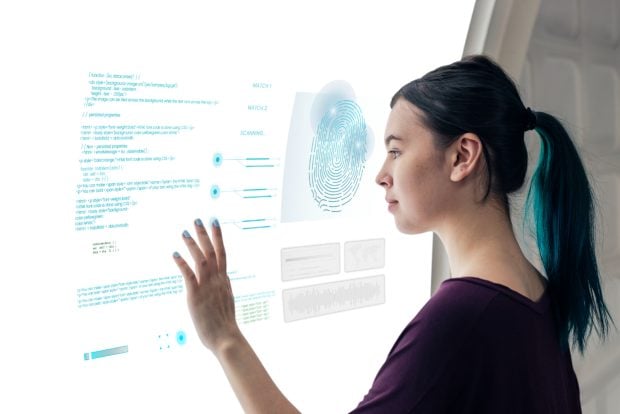Citizen Services in the Digital Era – a way forward for Governments

The last few decades have witnessed significant demographic shifts across the globe; emerging economies have seen a substantial growth in their middle class due to increased economic activity. High-speed internet connectivity with surging bandwidth has enabled accessibility and increased consumption through smartphones.
Rising incomes and greater connectivity have also changed expectations of how public services are consumed. In an omni-channel world, users have the luxury of consuming services anywhere, anytime and at any place.
While hiring a cab or placing a grocery order can happen at the click of a button, when it comes to their governments, citizens are subject to legacy technology and practices, whether it is renewing a driver’s license or applying for social services. According to an IDC report, more than 60% of governments around the globe have mentioned improving customer experience as their number one priority.1
However, public transformation programs are constrained by budget issues and lack of digital enablement. Research suggests that 75% of government technology budget is spent on maintaining legacy systems and 53% of the officials surveyed are burdened with excessive paperwork.2
Governments, especially those in emerging economies, are undertaking massive technology transformation programs (in digital citizen identity, banking, transportation and social welfare) to increase the penetration of public initiatives spanning multiple bodies. Inter-governmental agency interactions also necessitate development of a unique digital identity and a data protection framework to enable cross-system accessibility for businesses and individuals.
India, for instance, has rolled-out a unique citizen identity program with the intention of increasing welfare program penetration, widening the banking net, enabling digital payment systems and cashless transactions. While the scope of such programs is evolving, they are expected to have significant impact on the quality and efficiency of delivery of citizen services. 3
Brazil has developed a transparency portal to provide information on expenditures of federal agencies. This has helped in improving accountability and bringing in better reporting on the progress of government initiatives and transparency in the bidding process for contracts in public-private partnerships. This is also a step towards alleviating public concerns of corruption and nepotism in the system.3
In advanced economies like Singapore, public institutions are developing a central platform to provide a secure data-sharing environment to access basic citizen data. This environment makes it possible for government agencies to leverage APIs and build new services. 2
With the rise in citizen expectations, what can governments do to improve citizen engagement and experience? I recommend four aspects to prioritize:
- Taking a holistic system view instead of demarcating services in institutional siloes; identifying and re-engineering key back-end processes for better collaboration and modifying current SOPs to increase service penetration and efficiency.
- Identifying weak spots in the current citizen journey/experience, gathering data-points across key transition/handover points in the citizen journey and defining metrics to deliver insights and prioritize areas for improvement.
- Investing in digital pilots (API enablement, chatbot implementations, user data analytics and notification systems) while upskilling employees, as automation further improves efficiencies and AI solutions help in building a digital workspace.
- Defining a robust data protection policy to prevent and penalize privacy violations, encouraging more citizens to participate in online initiatives.
Public institutions would do well to create digital governance models to oversee long-term technology transformations and define an operating model to define accountability across functions.
Operational governance would also be needed to monitor progress, measure service quality and the impact of digital solutions in citizen engagement. While service transformation would define customer experience, analytics would enable governments to understand the needs and preferences of citizens and shape policy accordingly. Citizen services of the future would go a long way in improving credibility of government initiatives and re-instilling public faith by providing transparency through continuous engagement.
 About the Author: Srini Pallia, President- Consumer Business Unit, Wipro Ltd.
About the Author: Srini Pallia, President- Consumer Business Unit, Wipro Ltd.
Srini is the President of Wipro’s Consumer BU which serves clients in a range of consumer-focused industries including Retail, CPG, New Age, Media & Entertainment, Travel, Transportation & Hospitality and Public Sector. He is responsible for setting the vision as well as shaping and implementing growth strategies for each of the industry verticals.
Srini has been with Wipro for over 25 years in various leadership roles – establishing, scaling and spearheading growth across Business Units, Service Lines and Markets. In his previous role, Srini was Chief Executive of the RCTG Business unit. Prior to that, he was Sr. Vice President, Business Application Services, with a team of over 25,000 people across dedicated practices. This service line contributed to 30% of Wipro’s global revenues. He has also been Vice President – Business Development and Sales for Americas geography, driving business across multiple industry verticals.
He was rated among the top 25 Young Business Executives in India by Business Today in 2008. He has received several accolades including Award of Excellence for Exemplary Performance and Chairman’s Club – Most Valuable Player for his contributions to Wipro’s growth. Srini holds a Master’s degree in Management Studies from Indian Institute of Science, Bangalore and a Bachelor’s degree in Engineering. He has undergone an Advanced Leadership Program from McGill Executive Institute, Canada. Srini is based in New Jersey, USA.

















